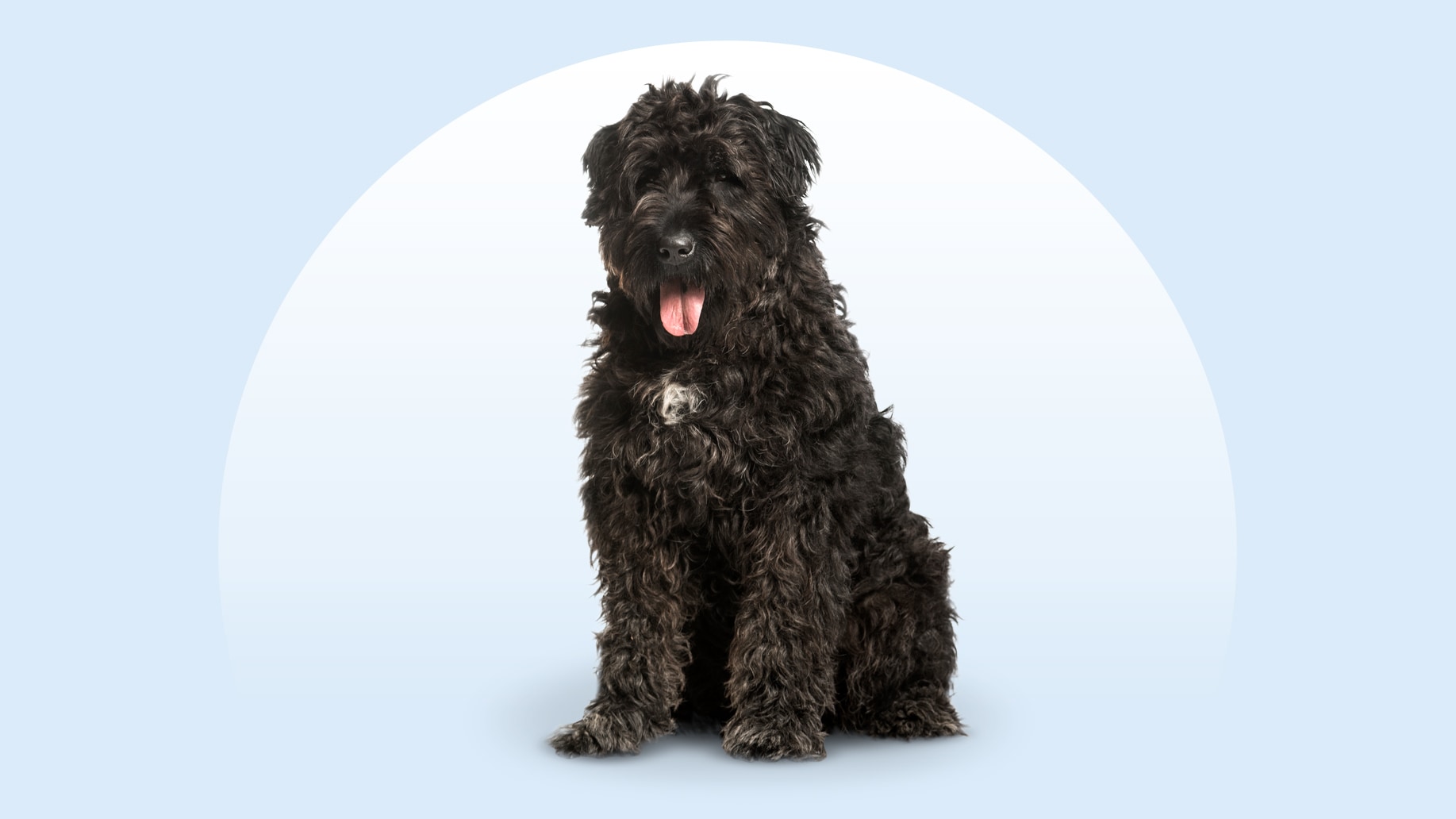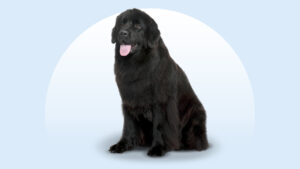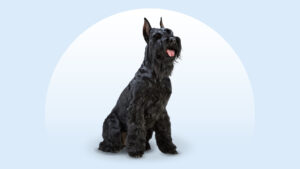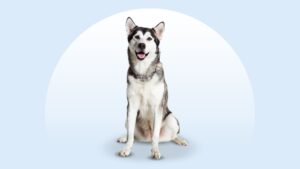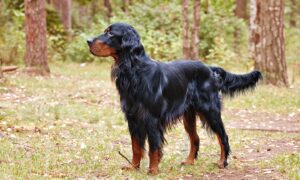Bouvier des Flandres
Updated December 15, 2025
Bouvier des Flandres
Updated December 15, 2025
Bouvier des Flandres dogs are full of energy—so they thrive with active pet parents who can provide plenty of exercise and socialization and keep up with their grooming needs. These gentle giants would also love access to a big backyard where they can run and play.
Gentle Giant, Assertive, Hard Worker
Males: 70-110 pounds
Females: 70-110 pounds
Male: 24.5-27.5 inches
Female: 23.5-26.5 inches
10 to 12 years
Black, Brindle, Fawn, Gray Brindle, Pepper and Salt, Gray
The first thing you need to know about the Bouvier des Flandres is they were bred to herd. This means pretty much what you would expect: They will be inclined to take change of the situation, even if that situation is you. Large, strong and family-friendly, they’re the good-looking muscle that’s there to keep everyone safe. Their high level of intelligence and energy requires you to stay ahead of them, or else they’ll get ahead of you. But all that said, they’re sweet and serene, all beauty and brawn, who just want to turn your house into their den of zen.
Bouvier des Flandres Characteristics
Bouvier des Flandres Appearance
Bouvier des Flandres look almost like giant, stocky teddy bears. Their mustache, beard and wiry eyebrows give their face a unique look, while the breed’s muscular body is powerful and heavyset. And with Bouvier colors coming in a rainbow that ranges from fawn to black, their rough double coat sets them up equally as well for dirty outdoor jobs or relaxing inside.

- Ears
Bouvier des Flandres ears are floppy and set high on the head.
- Eyes
Bouvier eyes are oval-shaped and dark brown.
- Nose
Their nose is large and black with flared nostrils.
- Coat Length
Their double coats are medium in length and capable of withstanding harsh weather. The outer coat is rough and harsh, and the undercoat is fine, soft and dense.
- Coat Color
The Bouvier coat colors include fawn, salt and pepper, gray, brindle (subtle tiger stripes) and black.
- Tail
The AKC breed standard calls for the tail to be docked. Docking involves cutting a portion of the dog’s tail off when they are puppies. Veterinary groups along with many US states and countries have banned this procedure due to medical and behavioral reasons. If you are interested in this procedure, schedule a consultation with your veterinarian.
Bouvier des Flandres Temperament
Affectionately known as “gentle giants,” Bouvier des Flandres are assertive, but simultaneously loyal and intelligent. They have a strong, self-confident personality and need a firm hand when training. At the same time, however, they’re loyal and loving—happy to spend time with your family on the couch or going for a long walk. Young Bouviers can be rowdy or destructive, but the breed typically mellows out as they age (Bouviers are considered fully grown by the time they’re 2 or 3 years old).
The Bouvier des Flandres is a working dog, happiest when they’re herding a group of cattle or guarding your home to keep your family safe. Bred to help out with various jobs around a farm, today’s Bouviers are equally as happy acting as police dogs or service dogs. Don’t be afraid to give your Bouvier a job in your household—that’s exactly what they want. (And that laundry isn’t going to fold itself, after all.)
Bouvier des Flandres tend to do well with kids, especially if they grow up alongside them. But Bouviers don’t always get along with other animals; they can be dominant over other dogs, and their high prey drive may interfere with their relationship with cats. Slow introductions and setting firm boundaries can help improve a Bouvier’s relationship with other pets. To people outside your family, Bouviers’ traits may show up as reserved or aloof (that’s where those guard dog tendencies come in). But to the members of your household, a Bouvier will be affectionate and loyal to the end.
How to Care for a Bouvier des Flandres
Between their curly coat, assertive personality and strong work ethic, Bouviers des Flandres have a unique set of needs. For an experienced pet parent, however, a Bouvier won’t be overly difficult to take care of. And your Bouvier will give you ample reward for your hard work—offering their love, dependability and protection of your home.
Grooming
Training
Diet
Exercise
Environment
Bouvier des Flandres Health
Bouvier des Flandres dogs have a life expectancy of 10-12 years, and they are a fairly hardy breed. Like any dog, however, the Bouvier does have a few inherited diseases that pet parents will need to watch out for. Bouviers can also be prone to other health problems, and parents should speak with their veterinarians about those less frequent ailments. Common health problems include:
- Hip and Elbow Dysplasia: Hip and elbow dysplasia are congenital defects where the joint wasn’t formed properly, which can cause lameness and pain. Sometimes, these conditions require surgery. Often, however, they can be managed through weight management, anti-inflammatories and joint supplements.
- Hypothyroidism: Hypothyroidism is an endocrine disorder that develops in middle-aged to senior Bouviers. This health problem can be treated with thyroid hormone replacement.
- Eye Conditions: Cataracts, glaucoma, entropion and ectropion are a few of the eye conditions your Bouvier des Flandres may develop. Cataracts and glaucoma can lead to blindness but may be corrected with surgery. Entropion is where the eyelid rolls inward, and ectropion is where the eyelid rolls out. Surgery may be a solution for both.
- Sub-aortic Stenosis (SAS): SAS is a heart condition that is common in large dog breeds and can range from mild to severe. Severe cases cause symptoms like fainting, weakness and difficulty breathing. SAS is generally treated with medications and exercise restriction.
Bouvier des Flandres History
The Bouvier des Flandres was first bred in Belgium in the late 1800s. While their exact origin is not entirely clear, experts speculate that Schnauzers, Beaucerons, local farm dogs, and potentially Irish Wolfhounds and Scottish Deerhounds were bred to create the Bouvier as we know them today. Farmers used the Bouvier as drovers (cattle herds), guard dogs and draft animals (to pull carts). Essentially, Bouviers would take on any job that needed to be done around the farm. An official breed standard was established for the Bouvier in 1912.
By the early 1900s, war was brewing in Europe and smart, strong Bouviers were sometimes used to pull ambulances and carry guns and messages during World War I. The dogs who made it through the war were taken to other countries—and that’s how the Bouvier eventually ended up in America in 1920.
The Bouvier des Flandres breed also served during World War II. The Resistance in Holland used Bouviers to carry messages at night. A fun Bouvier fact is that later in the 20th century, this breed became popular among royalty and presidential leadership: Ronald and Nancy Reagan had a Bouvier named Lucky, and a Bouvier police dog named Jango was sometimes used to guard Princess Diana.
The Bouvier des Flandres was recognized by the American Kennel Club (AKC) in 1929. Today, they’re ranked as “somewhat popular” according to the breed’s AKC rating. Not everyone has heard of the Bouvier des Flandres, but those who have are staunchly devoted to the breed. If you’re wondering about the average Bouvier cost, you can expect to pay $1,500-$2,000 for a Bouvier des Flandres puppy. Find a list of breeders on the AKC’s website. Cast a wide net and keep an eye out at local animal shelters and Humane Societies, too. You never know where a Bouvier or a Bouvier mix will turn up. You can also search Chewy’s database of adoptable dogs in your area.
FAQs
Do Bouviers des Flandres shed?
How do you pronounce Bouvier des Flandres?
What does Bouvier des Flandres mean?
Are Bouviers good family dogs?
Do Bouviers bark a lot?
Expert input provided by Erin Askeland, CPDT-KA, CBCC-KA, Animal Health & Behavior Consultant at Camp Bow Wow; and Dr. J. Todd Gross, DVM, of Goodlettsville Animal Hospital in Nashville, Tennessee.
Photo credit for “How do I look?” by the New York Times
Breed characteristic ratings provided by Dr. Sarah J. Wooten, DVM, CVJ, a veterinarian at Sheep Draw Veterinary Hospital in Greeley, Colorado; dog trainer and behavior consultant Irith Bloom, CPDT-KSA, CBCC-KA, CDBC, owner of The Sophisticated Dog, LLC, in Los Angeles; and certified animal behavior consultant Amy Shojai, CABC, in Sherman, Texas.
The health content was medically reviewed by Chewy vets.
